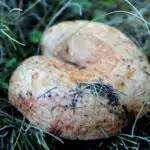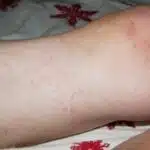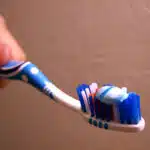Caramel stains are a common problem that many people encounter when enjoying their favorite sweet treats. These stains can be stubborn and difficult to remove, leaving unsightly marks on clothes and carpets. As a cleaning expert, I have encountered numerous cases of caramel stains and have developed effective methods for removing them.
In this article, I will share my expertise on how to remove caramel stains from clothes and carpets. Whether you accidentally spilled some caramel sauce on your shirt or your child dropped a caramel candy on the carpet, these tips and tricks will help you eliminate the stain and restore the appearance of your fabrics. With the right tools and techniques, you can say goodbye to caramel stains for good and enjoy your desserts without worrying about ruining your clothes or carpets.
Understanding Caramel Stains
Caramel stains are a common nuisance that many people encounter in their daily lives. Understanding caramel chemistry is crucial to effectively removing these stains from clothes and carpets. Caramel is made by heating sugar until it melts and turns brown, creating a sweet, sticky substance. When it comes into contact with fabric, it can leave behind an unsightly stain that can be difficult to remove.
Common sources of caramel stains include candy, syrup, and baked goods. These substances often contain high amounts of sugar and can easily drip onto clothing or carpets during preparation or consumption. The heat from cooking or baking can also cause caramel to become more viscous, making it even harder to remove once it has dried onto fabric.
As a cleaning expert, I recommend treating caramel stains as soon as possible to prevent them from setting into the fabric. Understanding the chemistry of caramel is essential for effective removal, as different fabrics may require different cleaning methods. In the next section, we will discuss how to identify the type of fabric and choose the appropriate cleaning method for your specific situation.
Identifying The Type Of Fabric
Fabric identification is an essential step before you start any cleaning process. It helps you to determine the appropriate method and products to use for removing stains from clothes and carpet. Every fabric reacts differently to cleaning agents, and some materials may get damaged if exposed to harsh chemicals. Hence, it is crucial to identify the type of fabric before proceeding with the stain removal process.
Material compatibility is another factor that needs to be considered while identifying the fabric type. Some fabrics are compatible with specific cleaning agents, whereas others are not. For example, silk, wool, and linen require gentle treatment and specialized cleaning products compared to cotton or polyester fabrics. Therefore, it is vital to read the manufacturer’s label instructions on how to clean different materials before attempting any cleaning process.
Once you have identified the type of fabric and its compatibility with cleaning agents, you can proceed with pre-treating the stain. Depending on the material type, pre-treatment may involve applying a solvent-based cleaner or a detergent solution directly onto the stain. The pre-treatment process helps loosen up the caramel stain from the fabric fibers and makes it easier to remove during washing or dry-cleaning processes. Always test any new product or method on a small area first before applying it on a larger section of your clothes or carpet.
Transition: Now that we know how important it is to identify the fabric type and its compatibility with different cleaning agents let us move on to discussing how we can effectively pre-treat caramel stains from clothes and carpets without causing damage.
Pre-Treating The Stain
After identifying the type of fabric, the next step is pre-treating the stain. Pre treating techniques are important to ensure effective stain removal methods. Caramel stains can be stubborn and difficult to remove, but with proper pre-treatment, they can be eliminated.
Pre-treating a caramel stain involves using a combination of household items and cleaning products. Here are three effective pre-treatment techniques to remove caramel stains from clothes and carpet:
Vinegar solution: Mix equal parts white vinegar and water in a spray bottle. Apply the solution directly onto the caramel stain and let it sit for 10-15 minutes before blotting with a clean cloth.
Ammonia solution: Create a mixture of one tablespoon ammonia and one cup of warm water. Apply it directly onto the stained area, then blot with a clean cloth.
Liquid detergent: Apply liquid detergent directly onto the stained area, let it sit for 5-10 minutes before washing as usual.
Using cold water is essential when removing caramel stains from clothes and carpet. Cold water helps prevent the stain from setting into the fabric or carpet fibers, making it easier to remove during laundering or cleaning. Always avoid hot water when dealing with caramel stains as hot water can set them deeper into the fabric or carpet fibers, making them more difficult to remove. Remember to always check care labels before using any pre-treatment techniques on your fabrics or carpets.
Using Cold Water
Cold water is a powerful tool in removing caramel stains from clothes and carpet. It works by constricting the fibers of the fabric, which helps to prevent the stain from setting in. Think of cold water as a gentle yet effective hand that lifts away dirt and grime without causing any damage to your precious belongings. By using cold water, you can ensure that your clothes and carpet remain clean and vibrant.
Benefits of cold water are numerous when it comes to stain removal. Unlike warm or hot water, which can cause the stain to set in deeper, cold water slows down the chemical reaction between the stain and the fabric. This gives you more time to work on removing the stain before it sets in permanently. Additionally, cold water is less likely to cause colors to bleed or fade, making it ideal for use on delicate fabrics.
Common mistakes to avoid with cold water include using too much pressure when rubbing the stained area. This can cause the fibers of the fabric to break down, leading to permanent damage. Another mistake is using hot water instead of cold water. Hot water can cause stubborn stains like caramel to set even deeper into the fabric, making them almost impossible to remove. By avoiding these common mistakes and following proper techniques for using cold water, you can effectively remove caramel stains from clothes and carpet without causing any harm.
Transition: Now that we have learned about the benefits of using cold water for removing caramel stains from clothes and carpet while avoiding common mistakes let’s move onto another effective technique – applying dish soap.
Applying Dish Soap
Dish soap is a simple and effective solution for removing caramel stains from clothes and carpet. This common household item can be found in most kitchens and is an essential tool in the fight against stubborn stains. Here are some tips on how to use dish soap effectively:
- Apply the dish soap directly onto the stain and let it sit for at least 5 minutes before washing.
- Use cold or lukewarm water when washing the stained garment to prevent the stain from setting in further.
- For carpets, mix a small amount of dish soap with warm water and apply it onto the stain using a clean cloth. Blot gently until the stain fades away.
- Make sure to rinse thoroughly after washing or blotting with dish soap.
Alternative methods exist to remove caramel stains, but their effectiveness may vary. For example, using baking soda mixed with water could work for some types of stains, but not all. Comparing different methods can help you find the best approach for you.
Using dish soap is an easy and affordable way to tackle caramel stains on clothing and carpets. It’s important to keep in mind that some fabrics may require special care, so always check the label before applying any cleaning solution. In the next section, we will discuss how white vinegar can also be used as a powerful cleaning agent for removing caramel stains from clothes and carpets.
Using White Vinegar
Dish soap has a proven track record of removing tough stains from clothes and carpets. However, some stubborn caramel stains may require additional treatment. This is where white vinegar comes in handy.
Benefits of white vinegar for stain removal go beyond its natural acidity. It is an eco-friendly alternative to harsh chemicals and does not have any toxic fumes that can cause respiratory irritation. White vinegar also acts as a natural fabric softener, which means it will leave your clothes feeling fresh and fluffy after washing. Additionally, it has antibacterial properties that help eliminate odors caused by bacteria.
If you do not have white vinegar on hand or prefer an alternative method for removing caramel stains from clothes or carpet, there are several options available. For instance, rubbing alcohol can break down the sugars in caramel stains and make them easier to remove. Hydrogen peroxide is another effective option, although it may bleach certain fabrics.
Making a baking soda paste is yet another popular way to tackle caramel stains. The alkaline nature of baking soda helps lift the stain from the surface while its texture works as an abrasive agent to scrub away the stain particles. Once you have made a paste with baking soda and water, apply it directly to the affected area and let it sit for at least 30 minutes before rinsing off with cold water.
Making A Baking Soda Paste
- To make a baking soda paste, begin by mixing equal parts of baking soda and water in a bowl.
- Stir the mixture until it creates a thick paste-like consistency.
- Apply the paste directly onto the stain and let it sit for 10-15 minutes.
- Use a damp cloth or sponge to rub the paste gently into the fabric and begin to remove the stain.
Mixing Baking Soda
When it comes to removing tough stains, using baking soda for cleaning can be a game-changer. Its versatility and effectiveness have made it a popular choice among cleaning experts. Baking soda, also known as sodium bicarbonate, is a natural stain remover that can tackle even the most stubborn stains without damaging your clothes or carpet.
One of the best ways to use baking soda for removing caramel stains from clothes and carpet is by making a baking soda paste. To do this, mix equal parts of baking soda and water until you get a thick paste. Apply the paste directly onto the stain and let it sit for at least 30 minutes. Then, rinse the area with warm water and wash your clothes as usual. For carpets, use a clean cloth to blot the stain until it lifts away.
Mixing baking soda with other ingredients can also enhance its stain-removing power. For instance, you can add vinegar or lemon juice to create a fizzing reaction that can help loosen up the caramel stain from fabrics or fibers. Alternatively, you can mix in hydrogen peroxide to boost its bleaching properties for white clothes or light-colored carpets. However, always spot test first in an inconspicuous area before applying any mixture to avoid damaging your items.
In summary, using baking soda for cleaning is an effective and natural way to remove caramel stains from clothes and carpets. By making a baking soda paste and mixing it with other ingredients if needed, you can lift away even the toughest stains without resorting to harsh chemicals or expensive products. With these simple tips, you can restore your items back to their pristine condition in no time!
Applying Paste
Now that we’ve discussed the benefits of using baking soda for cleaning caramel stains, let’s explore how to apply it effectively. One of the most common methods is to make a baking soda paste by mixing equal parts of baking soda and water. This paste can be applied directly onto the stain and left to sit for at least 30 minutes before rinsing with warm water.
Another way to enhance the power of baking soda paste is by adding alternative solutions such as vinegar or lemon juice. These ingredients create a fizzing reaction that can help loosen up even the toughest stains from fabrics or fibers. DIY recipes like this can be very effective, but it’s important to spot test in an inconspicuous area first to avoid any damage.
Overall, applying a baking soda paste is a simple and effective way to remove caramel stains from clothes and carpets. By experimenting with different mixtures and testing them out in small areas, you can find the perfect solution for your specific needs. With these tips, you’ll be able to tackle tough stains without resorting to harsh chemicals or expensive products, all while serving others through your cleaning expertise.
Using Rubbing Alcohol
Rubbing alcohol is a powerful solvent that can effectively remove caramel stains from clothes and carpet. The benefits of using rubbing alcohol are numerous. First, it’s readily available in most households and is relatively inexpensive. Second, it evaporates quickly, leaving no residue behind. Finally, rubbing alcohol is safe to use on most fabrics and surfaces.
If you don’t have rubbing alcohol on hand or prefer not to use it, there are some alternatives you can try. One option is to mix a solution of equal parts vinegar and water and apply it directly to the stain with a cloth or sponge. Another alternative is to make a paste from baking soda and water and apply it to the stain. Let the paste sit for 10-15 minutes before wiping away with a damp cloth.
In summary, using rubbing alcohol is an effective way to remove caramel stains from clothes and carpet due to its availability, quick evaporation time, and safety on most fabrics and surfaces. However, if rubbing alcohol isn’t available or preferred, there are still other options such as vinegar solution or baking soda paste that can be used as an alternative stain remover. In the next section, we will discuss how to apply hydrogen peroxide for removing caramel stains.
Applying Hydrogen Peroxide
There is a theory that hydrogen peroxide can effectively remove caramel stains from clothes and carpets. This theory is based on the idea that hydrogen peroxide has bleaching properties that break down the caramel molecules, making it easier to remove them from the fabric or carpet fibers. However, before applying this cleaning solution, it’s important to investigate its effectiveness and safety precautions.
The effectiveness of hydrogen peroxide in removing caramel stains depends on several factors, including the type of fabric or carpet material, the age and severity of the stain, and the concentration and application method of the hydrogen peroxide solution. In general, a 3% hydrogen peroxide solution can be used for most fabrics and carpets without causing damage. However, it’s essential to test a small inconspicuous area first to ensure that no discoloration or damage occurs.
When using hydrogen peroxide as a cleaning solution for caramel stains, safety precautions should be taken to avoid skin irritation or inhalation hazards. It’s recommended to wear gloves and protective eyewear when handling hydrogen peroxide solutions. Also, make sure to use it in a well-ventilated area and keep it away from heat sources or flames. If ingested or inhaled accidentally, seek medical attention immediately.
Transition: Now that you know how to safely use hydrogen peroxide as a cleaning solution for caramel stains let’s move on to another effective method which is using enzyme cleaner.
Using Enzyme Cleaner
Enzyme cleaners can be used to remove caramel stains from clothes by pre-treating the stain with the enzyme cleaner, allowing it to sit for five to ten minutes before washing, and then laundering as usual. For carpets, enzyme cleaners should be applied directly to the stain, gently blotted with a cloth, and left to sit for five to ten minutes before rinsing with cool water. Repeat if necessary.
Using Enzyme Cleaner On Clothes
When it comes to removing caramel stains from clothes, using an enzyme cleaner can be an effective solution. Enzyme cleaners are designed to break down and dissolve organic matter, such as food stains, urine, and blood. They work by targeting the specific proteins in the stain and breaking them down into smaller molecules that are easier to remove.
One of the benefits of using enzyme cleaners on clothes is that they are gentle on fabrics. Unlike harsh chemicals that can damage or discolor clothing fibers, enzyme cleaners are formulated to be safe for use on a wide range of materials. Additionally, enzyme cleaners can be more effective than traditional stain removal methods like bleach or vinegar. While these methods may mask or lighten the stain temporarily, they do not address the underlying protein molecules that make up the stain.
In comparison with other stain removal methods, using an enzyme cleaner on caramel stains is often a more thorough and long-lasting solution. Not only does it remove the visible stain, but it also eliminates any residual odor that may linger after washing. It is important to follow the instructions carefully when using an enzyme cleaner on clothes to ensure optimal results. With a little bit of patience and persistence, even tough caramel stains can be removed with ease using this powerful cleaning tool.
Using Enzyme Cleaner On Carpet
Another surface where enzyme cleaners can be effective is carpets. Carpets are prone to stains from spills, pet accidents, and other sources of organic matter. Using an enzyme cleaner on carpets can help break down and remove these stains, leaving the carpet looking clean and fresh.
One of the benefits of using enzyme cleaners on carpets is that they are safe for use around children and pets. Unlike harsh chemicals that may leave behind toxic residues, enzyme cleaners are formulated with natural ingredients that are non-toxic and biodegradable. Additionally, enzyme cleaners can be less expensive than professional carpet cleaning services.
To make a DIY enzyme cleaner for carpets, mix equal parts water and white vinegar in a spray bottle. Add a few drops of dish soap and some baking soda to the mixture. Shake well before use and apply to the stained area. Let sit for 10-15 minutes before blotting with a clean cloth or paper towel. Repeat as necessary until the stain is removed.
Steam Cleaning Carpets
Using an enzyme cleaner can effectively remove caramel stains from clothes and carpets. However, for more stubborn stains or larger areas of carpet, steam cleaning may be necessary. Professional steam cleaning offers several benefits, including a deep clean that removes dirt and debris from the fibers of the carpet, as well as removing any lingering odors.
For those who prefer to tackle carpet cleaning on their own, DIY steam cleaning is an option. It is important to note that not all types of carpet are suitable for steam cleaning, so it is important to check with the manufacturer before proceeding. Additionally, using too much water during the process can lead to mold growth or damage to the carpet fibers.
To successfully DIY steam clean a carpet, follow these tips:
- Vacuum the area thoroughly before beginning.
- Use a high-quality steam cleaner with adjustable settings.
- Adjust the settings based on the type and condition of the carpet.
- Follow manufacturer instructions carefully.
- Allow ample time for drying after the process is complete.
Incorporating a professional steam cleaning service into your regular maintenance routine can greatly extend the life of your carpets while keeping them looking fresh and clean. For those who prefer DIY methods, taking proper precautions and following best practices can help achieve satisfactory results. In cases where stains persist even after steam cleaning, using a specialized carpet stain remover may be necessary.
Using A Carpet Stain Remover
Removing caramel stains from carpets and clothes can be a daunting task. However, with the right cleaning products and techniques, it is possible to get rid of these stubborn stains. Using a carpet stain remover is an effective way of removing caramel stains from carpets. It works by breaking down the stain molecules and lifting them off the carpet fibers.
When it comes to using a carpet stain remover, there are several benefits of professional cleaning over DIY cleaning. Professional cleaners have access to advanced equipment and solutions that are not available to consumers. They also have years of experience dealing with different types of stains, including caramel stains. Additionally, professional cleaners use eco-friendly carpet cleaning options that are safe for pets and children.
If you prefer to do the cleaning yourself, make sure to choose an eco-friendly carpet stain remover that is gentle on your carpets and safe for your family. These products are made with natural ingredients that do not harm the environment or emit harmful chemicals into your home. Eco-friendly carpet cleaning options not only protect your health but also help reduce your carbon footprint.
Now that you know how to use a carpet stain remover effectively, it’s time to move on to the next step: drying the fabric.
Drying The Fabric
Once you have removed the caramel stains from your clothes or carpet, it’s important to dry them properly to avoid any potential damage. One of the most significant factors to consider is whether to air dry or machine dry the fabric. While air drying can be a more gentle option, it may take longer for the fabric to dry completely. On the other hand, machine drying can be faster but can also cause shrinkage or damage if not done correctly.
If you decide to air dry your fabric, make sure to place it in a well-ventilated area away from direct sunlight and heat sources. This will help prevent any further staining or damage while allowing the fabric to dry naturally. You should also avoid hanging heavy garments as they may stretch out of shape during the drying process.
To speed up the drying process, consider using a fan or opening windows for increased airflow. Additionally, placing a towel underneath wet fabric can help absorb excess moisture and promote faster drying. If you choose to machine dry your fabric, use a low heat setting and remove it promptly once it’s finished to avoid over-drying.
Remember that proper drying techniques are crucial in preserving your clothes’ quality and preventing further damage. After ensuring that your fabric is completely dry, proceed with checking for residual stains before storing or wearing again.
Checking For Residual Stains
Now that you have successfully removed the caramel stains from your clothes and carpet, it’s important to check for residual stains. Often, people assume that once a stain is gone, it’s gone for good. However, this is not always the case. Residual stains can lurk beneath the surface of your fabric or carpet, only to reappear days or weeks later.
One common mistake people make is failing to thoroughly rinse the affected area after using a DIY stain removal hack. While these hacks can be effective in removing fresh stains, they can leave behind residue that attracts dirt and grime over time. To avoid this issue, it’s important to rinse the area with clean water and blot dry until no more moisture remains.
For those who prefer professional cleaning services, it’s still important to check for residual stains after the cleaning process. A thorough inspection will ensure that all traces of caramel have been removed from your clothes or carpet. If any residual stains are found, contact your cleaning service provider immediately so that they can address the issue before it becomes worse.
Moving forward, preventing caramel stains in the future requires some proactive measures. In the next section, we’ll discuss some simple steps you can take to protect your clothes and carpet from future spills and stains.
Preventing Caramel Stains In The Future
Preventing future stains is always the best solution to avoid any hassle in removing them. When it comes to caramel stains, it’s important to be mindful of where and how you consume the sticky treat. Avoid eating caramel near fabrics or carpets, and if possible, opt for a lighter color of clothing when indulging in this sweet snack.
Additionally, treating spills immediately is crucial to preventing caramel stains from setting in. The longer a spill sits on fabric or carpet, the more difficult it will be to remove. Use a clean cloth or paper towel to blot up as much of the spill as possible before applying any cleaning solution.
Lastly, consider using a protective spray on your carpet and upholstery to prevent future stains from setting in. There are various commercial products available that can help repel spills and make them easier to clean up. By taking preventative measures and being proactive about spills, you can save yourself time and frustration in the long run.
Overall, preventing caramel stains requires some extra effort and mindfulness but can ultimately save you time and money in the long run. By following these tips and incorporating protective measures into your cleaning routine, you can enjoy your favorite treats without worrying about ruining your clothing or carpet.
Conclusion
Caramel stains can be a real hassle to remove from clothes and carpet, but with the right knowledge and tools, it is possible to get rid of them. It’s important to first understand the type of fabric you are dealing with in order to properly pre-treat the stain. Using cold water and dish soap can help break down the caramel residue before using a carpet stain remover on carpets. After cleaning, make sure to dry the fabric thoroughly and check for any residual stains.
Preventing caramel stains may seem impossible, but there are steps that can be taken to reduce their occurrence. One way is to avoid eating or drinking near carpets or fabrics. Another option is to use protective clothing when cooking or baking with caramel. As they say, an ounce of prevention is worth a pound of cure. By taking these precautions, you can save yourself time and effort in removing stubborn caramel stains from your belongings.
Image Credits
- “Cute Japanese Caramel Corn” by Micah Sittig (featured)





























